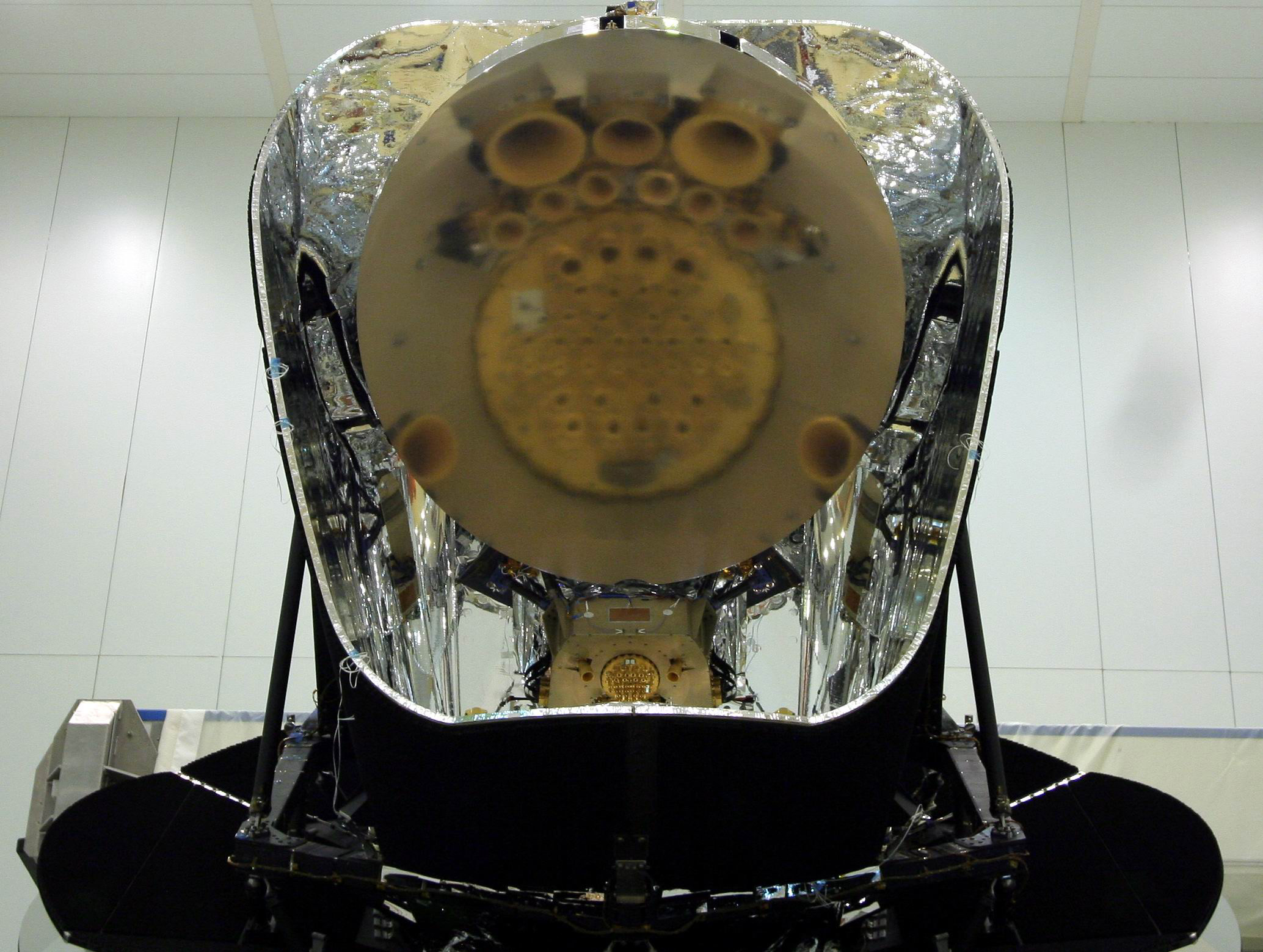ESA’s space observatories to explore the early universe
06 April 2009
Astronomers around the world are eagerly awaiting the launch of an Ariane 5 rocket carrying two groundbreaking ESA satellites named after famous European scientists: Planck and Herschel. Like 21st century time machines, these state-of-the-art space observatories will look back in time, helping scientists to unravel the secrets of how stars, galaxies, and the universe itself, were born.
Herschel will be the largest telescope ever launched into space. At its heart is a 3.5 m wide main mirror - which is much larger, but lighter, than the mirror used by the Hubble Space Telescope. The 3.4 tonne observatory is named after a German-British astronomer, William Herschel, who made history by discovering invisible infrared light (which we feel as heat) in the year 1800. Three instruments on the modern Herschel will spend at least three years investigating clouds of cold dust, where stars are born, and distant galaxies which shine strongly in the infrared.
Alongside Herschel will be a satellite that is designed to look back to the dawn of time. Named in honour of the German physicist Max Planck, the 1,900 kg spacecraft will study the faint echoes left over after the birth of the Universe in the Big Bang. These echoes show up as temperature variations of a few millionths of a degree. In order to detect and map this invisible microwave radiation, Planck’s two detectors will have to be supercooled to -273 degrees Celsius. Over a period of about 15 months, the observatory’s 1.5 m main mirror will collect the extremely faint radiation, which began its journey towards Earth some 14 billion years ago.






